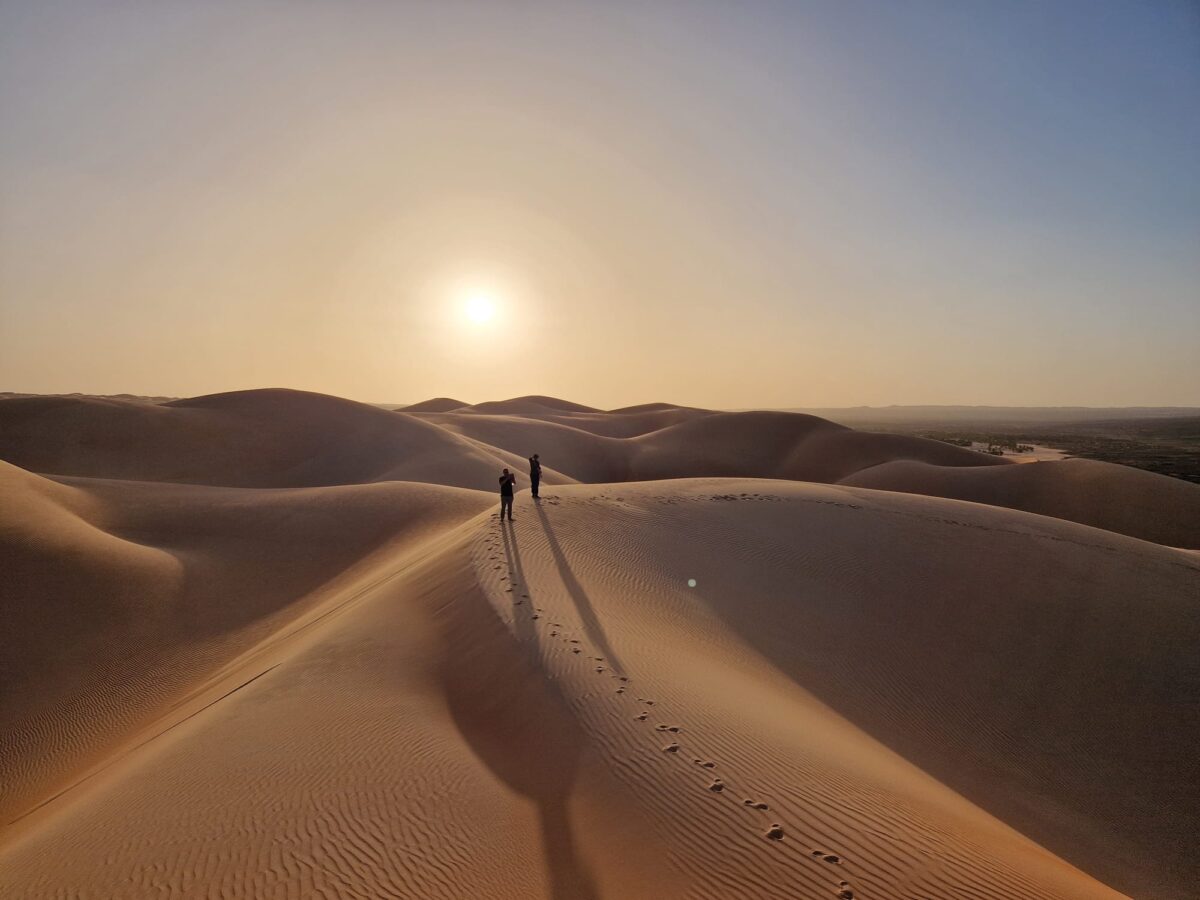
WHY SHOULD YOU TRAVEL TO MAURITANIA?
The Islamic Republic of Mauritania is a Saharan country located in Northwestern Africa. Sprawling desert almost exclusively makes up the land. Thus, desert scenery, wildlife, and lifestyles are in abundance. This endless sea of sand houses many traditional nomadic communities, and visitors can experience their way of life through camel trekking and desert camping trips. The Mauritanian desert has some of the most beautiful and unspoiled dunes in the world, and many tour operators can take you on guided trips through the desert.
Rich culture and history run deep in the veins of this country along the Atlantic Ocean. Visitors will experience the way of life of the Mauritanian people by visiting the markets, which sell traditional clothing, jewellery, and other crafts. You can also learn about the country’s history by visiting the National Museum of Mauritania in Nouakchott, the capital city.
Mauritania offers a unique and authentic experience for those interested in culture, history, and adventure. Its vast desert landscapes, ancient Islamic scholarly centres, UNESCO world heritage sites, diverse wildlife, and adventure opportunities make it an excellent destination for travellers hungry for an off-the-beaten-path destination.
WHERE IS MAURITANIA?
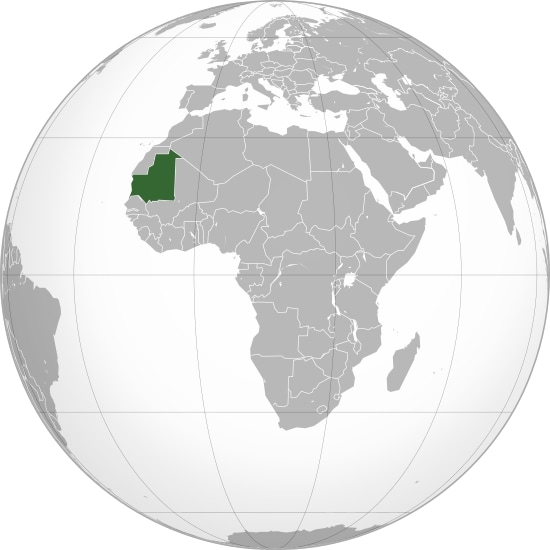
Mauritania is a North African country. Though sometimes it’s considered a West African nation. In reality, it shares similarities with both regions.
To its west sits the Atlantic Ocean, Western Sahara to the north, Algeria to the northeast, Mali to the east and southeast, and Senegal to the southwest.
THE BEST TOURIST DESTINATIONS IN MAURITANIA
Chinguetti: Considered to be one of the oldest and most important Islamic scholarly centres in West Africa. The city has several well-preserved medieval mosques, libraries, and important manuscripts.
Ouadane: This ancient city has been a staging post for the trans-Saharan trade for time out of mind. It was first mentioned in the 15th century by the Portuguese. Slaves, salt, and gold once passed through this once-prosperous town. The ruins are remarkably well-preserved and bear witness to a traditional lifestyle centred on the nomadic culture of the people of Western Sahara.
The Iron Ore Train: Going to Mauritania without riding the Iron Ore Train is like visiting London without stopping at Big Ben. This massive train carries ore from deep within the Sahara to the port of Nouadhibou on the Atlantic Ocean. The ride takes thirteen hours, and amenities are nonexistent. It’s a rough and tumble ride, but one filled with desert scenery and snapshots of Mauritania life.
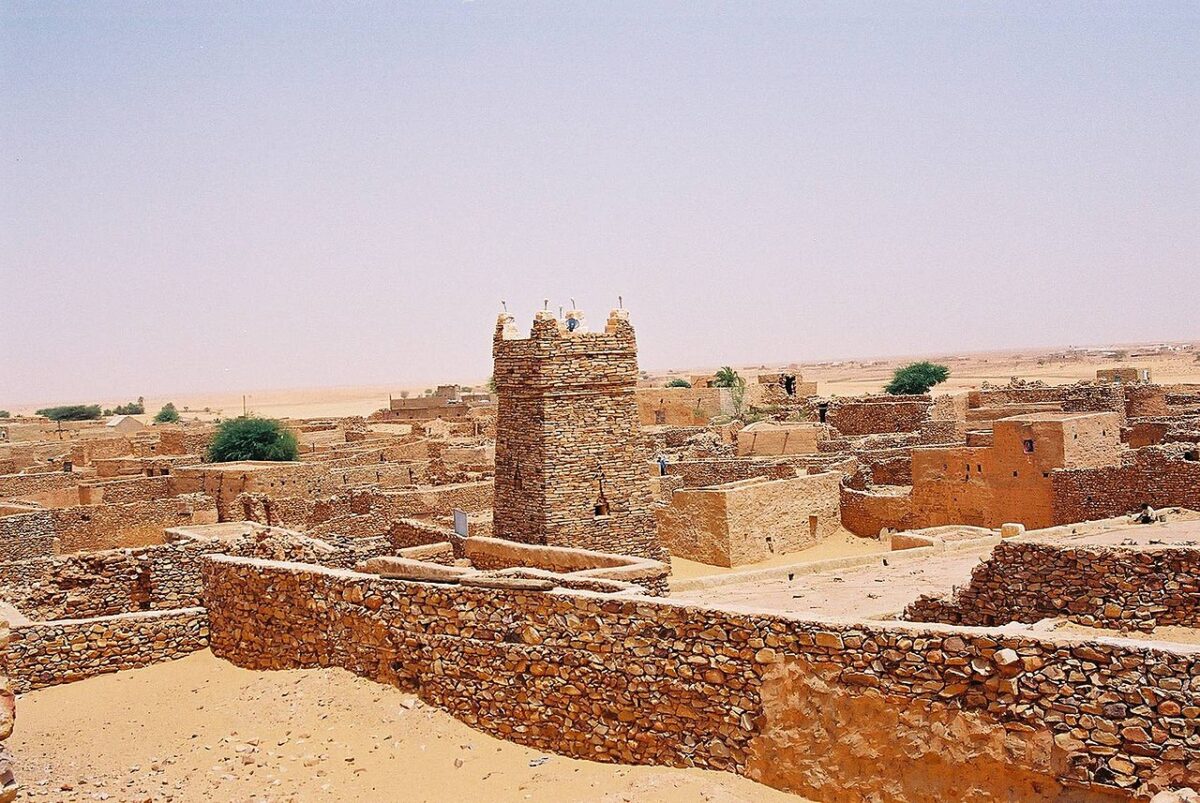
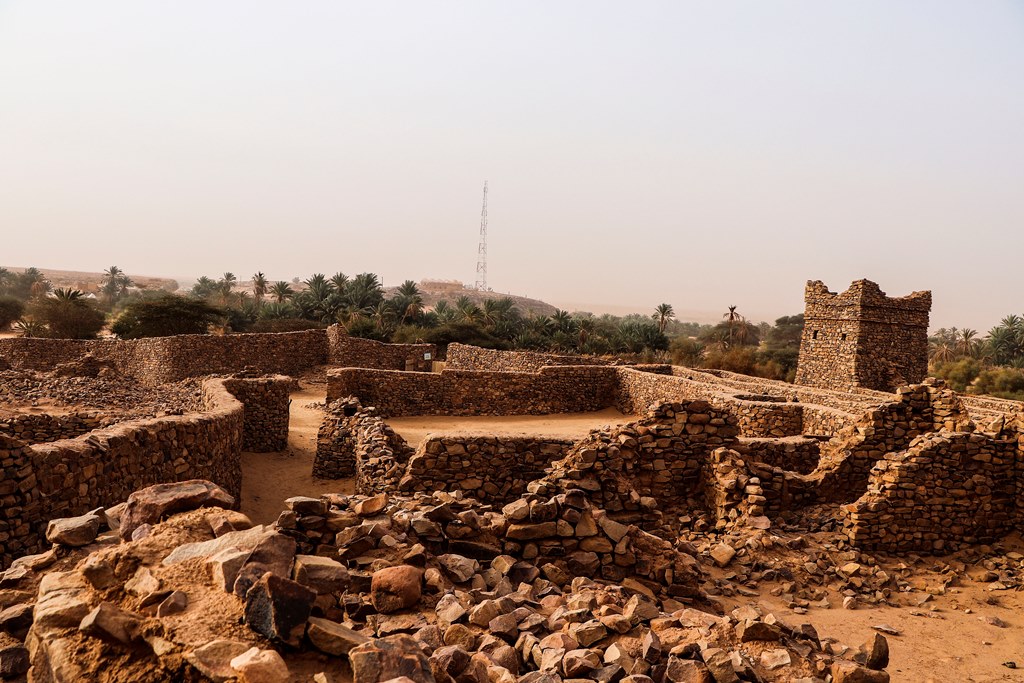

MAURITANIA’S CAPITAL
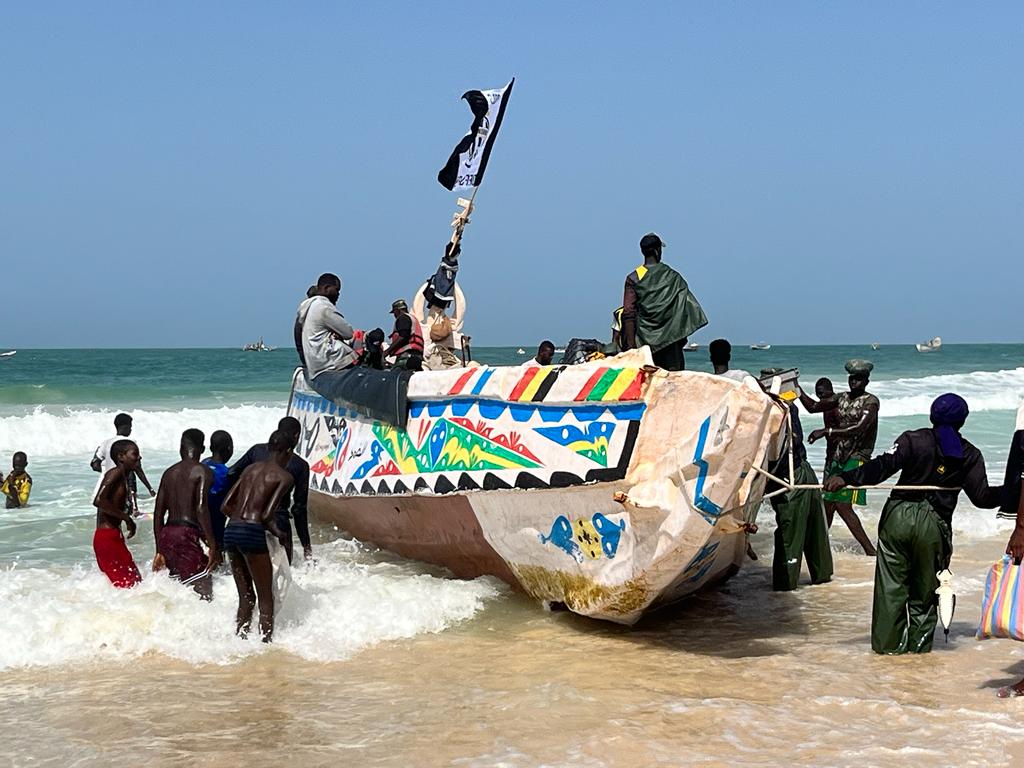
Nouakchott, the capital and most populous city of Mauritania, derives its name from the Berber word ‘Nawākšūṭ’, which means ‘place of winds.’
During colonial times, it was a fishing village of no importance. Then Mauritania gained independence in 1958, and Nouakchott was chosen as the new country’s capital. People came to the city in droves, especially in the 70s during a harsh decade of drought and desertification. Living conditions were squalid. Jobs were scarce.
Fortunately, the city has seen an uptick in living standards and employment opportunities. There are still slums, and it’s by no means a modern city, but despite the challenges any desert-country faces, the Mauritanian capital has grown. It’s the hub of Mauritania’s economy. There’s a deepwater port, an international airport, and even universities.
Lots of exciting destinations lie within and around the city.
You can head to the camel market to watch the Mauritanian version of Wall Street as people haggle for camels. For the history buffs, head down to the National Museum of Mauritania.
Not too far away is Port du Peche, where fishermen embark into the windy and turbulent waters of the Atlantic. Further inland are the Azoueigya dunes, some of the biggest in Mauritania.
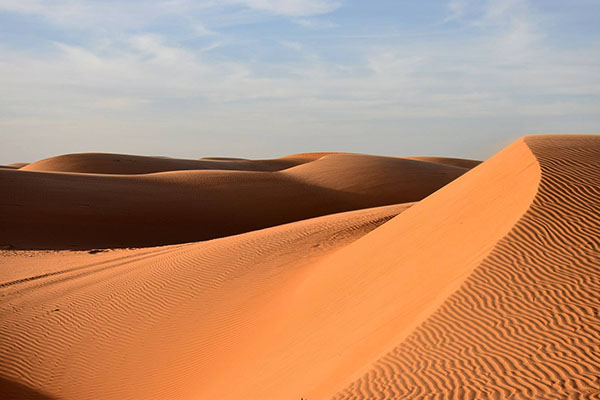
THE MAURITANIAN PEOPLE
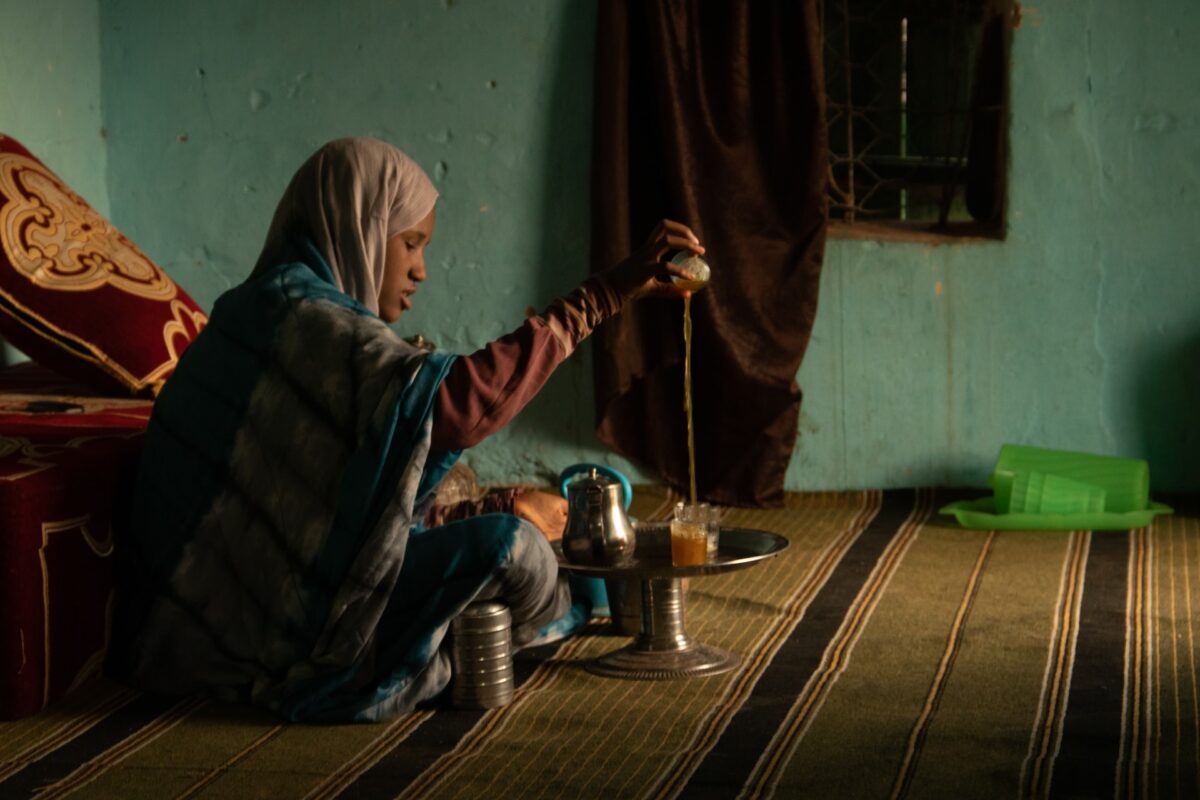
Three main ethnicities compose the 4.3 million citizens of Mauritania: West Africans, Bidhan or white Moors, and Haratin or black moors.
Arabic is the official language. However, it’s a variety called Hassaniya, spoken in a few Saharan countries in West Africa. Hassaniya fuses Arabic with many Berber words. Due to its colonial past, French is still used in Mauritania, mainly in the media and upper classes.
Islam is the beating heart of Mauritania. 99.9% of the people identify as Muslim, while .1% are Christian. The whole country abides by the doctrines of Sharia, and Mauritania is one of the few countries in the world to punish atheism by death.
A caste system is embedded within Mauritania’s past, akin to the one found in India. With its beliefs in rigid social stratification, this system led to slavery not only being condoned but encouraged in Mauritania. In 2007, Mauritania became the last country to outlaw slavery. Sadly, a study by Global Slavery Index in 2018 found that 2.1% of the population is still enslaved.
Many obstacles perpetuate the practice of slavery: The country is mainly desert, and it’s hard to enforce the laws in this vast area; even if slaves were to be freed, there are few opportunities for them to support themselves, and many people believe that slavery is a natural and normal part of society—most enslaved people are of the Haratin ethnicity, a group which historically was considered inferior.
It goes to show how deeply rooted ideas, however terrible they are, can be hard to change.
But progress has been made. Slavery, however slowly, is being driven out of Mauritania.
FLAG OF MAURITANIA
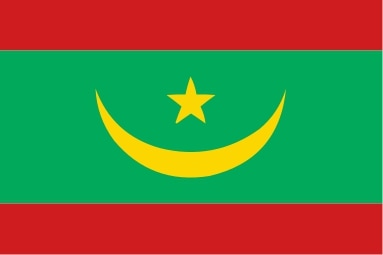
There are many meanings within the of Mauritania.
Gold, green, and red are the colours of Pan-Africanism—a movement which emphasises the unity between all people of Africa. Green also stands for Islam, and gold represents the Sahara Desert.
The crescent and star represent Mauritania’s adherence to the doctrines of Islam.
The two red stripes at the top and bottom are a recent addition. In 2017, President Mohamed Ould Abdel Aziz held a referendum which would make many amendments to the constitution. One of them was the addition of the red lines, symbolising “the efforts and sacrifices that the people of Mauritania will keep consenting, to the price of their blood, to defend their territory.”
MAURITANIA’S CLIMATE
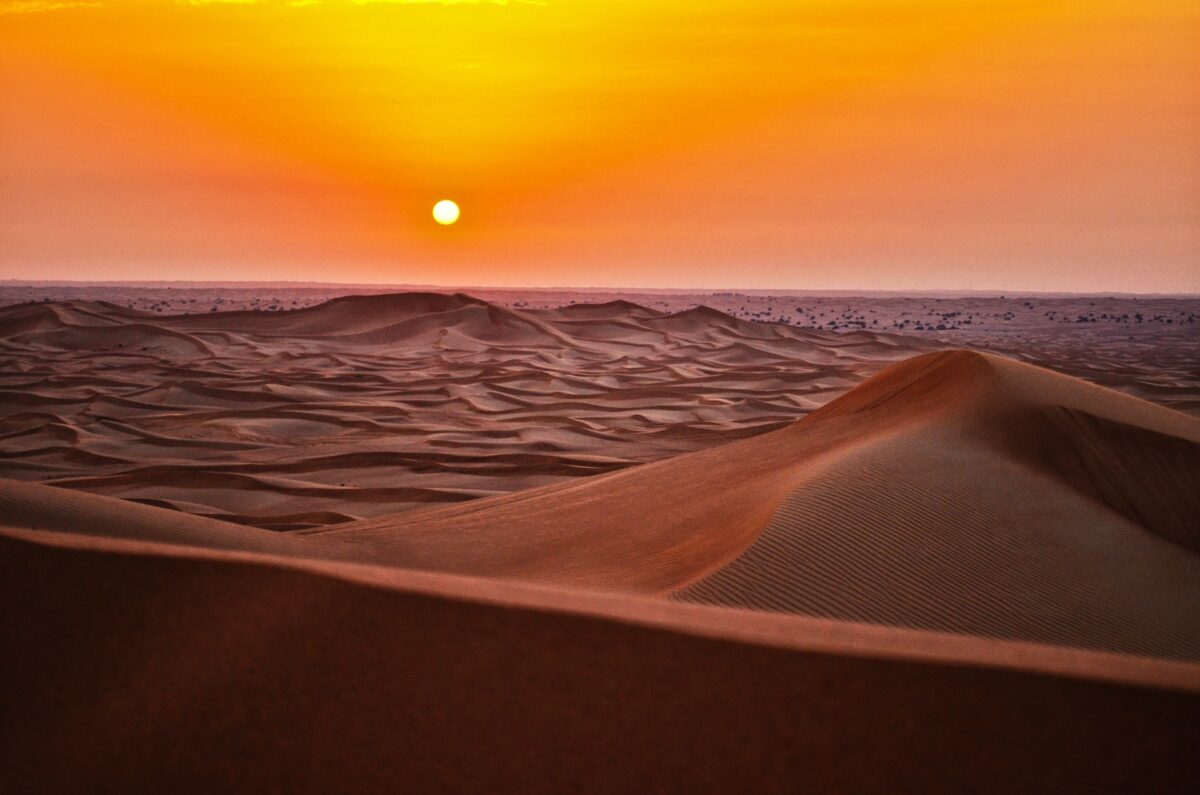
Since the Sahara dominates almost all of Mauritania, the climate won’t surprise you. It’s arid and hot. Various desert topographies pepper the land, from giant dunes to rocky outcroppings.
As you get nearer to the coast, there’s more vegetation. One of the most magnificent places in the country is the Banc d’Arguin National Park, a massive protected area home to several million migratory birds like pelicans, flamingoes, and terns.
It’s a haven for the animals of the sky and the sea. The park’s waters are rich with an incredible array of aquatic species, such as bottlenose dolphins, humpback whales, and killer whales.
IS IT SAFE TO TRAVEL TO MAURITANIA?
Absolutely.
While slavery is still around, tourists need not fear. Guests to the country are treated with the highest esteem. We have done tours to Mauritania for many years and are proud to say that we have a 100% safety record in the country.
A word of caution, though: You must always respect the laws and customs of Mauritania (or any country you visit). The rules of Mauritania are different from what most Westerners are used to. Always educate yourself on what’s expected of you and follow the rules.
If you do that, you’ll find Mauritania to be a country teeming with desert delights, incredible adventures on the Iron Ore Train, and, overall, a wonderful Saharan desert destination. Mauritania may be unknown and underdeveloped but is undoubtedly fascinating.
Check out our tour of Mauritania. We run several a year. The Iron Ore Train is the central experience of this trip. But there’s so much more on the itinerary, such as an excursion into Western Sahara.

Keep In touch
Make sure you never miss an adventure by signing up to our mailing list. Be the first to know about new tours and travel tips.
